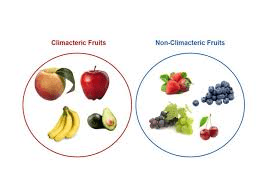Maturity in virtually all crops can be divided into two types, physiological maturity which describes that period when sexually induced reproductive growth has ceased, and harvest maturity, where the seed, fruit, or another economically important organ of yield has reached a state of ―ripeness and can be removed from the parent plant for consumption.
For most agronomic crops maturity ratings refer to the time from germination until physiological maturity.
Days to harvest maturity can be different from one season to the next for the same cultivar and is greatly influenced by environmental conditions, especially temperature; relative humidity; and extent of cloud cover after physiological maturity.
Understanding Maturity, Ripening, and Senescence
The principles dictating at which stage of maturity a fruit or vegetable should be harvested are crucial to its subsequent storage and marketable life and quality. Post-harvest physiologists distinguish three stages in the life span of fruits and vegetables: maturation, ripening, and senescence.
Maturations indicative of the fruit being ready for harvest. At this point, the edible part of the fruit or vegetable is fully developed in size, although it may not be ready for immediate consumption.
Types of Maturity
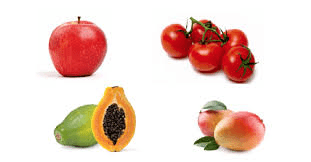
Physiological maturity – This refers to a particular stage in the development of a plant or plant organ. A crop is physiologically mature when its development is over. Physiologically mature fruit may not necessarily be commercially mature.
For example, papayas are harvested for domestic markets at physiological maturity, i.e. when three-quarters of the fruit assumes a yellow-to-green colour.
Commercial maturity – refers to the timing of harvest to meet specific market and consumer requirements. A crop is commercially mature when it reaches a developmental stage at which it can be marketed for a specific purpose, e.g. for consumption in the fresh state, or for processing.
Papayas, for example, are harvested for export at the mature stage, i.e. when the fruit is firm and easy to handle. On arrival at the destination, the fruit is ripened in ripening rooms. Commercial maturity has little impact on physiological maturity.
Ripening: Ripening follows or overlaps maturation, rendering the produce edible, as indicated by taste. Ripening is defined as the sequence of changes in texture, colour and flavour as a result of physiological and biochemical change that makes the fruit ready for consumption.
Read Also: List of Diseases Ruminant Animals (Livestock) Get from Feeds and Water
Artificial ripening is encouraged when climacteric fruits are picked relatively green and subsequently ripened by introducing ethylene or acetylene gas (calcium carbide) e.g. Banana, Mango, Pear and Avocado.
On the basis of the respiratory pattern and ripening behaviour, fruits are classified into two classes such as climacteric fruits and non-climacteric fruits.
Climactericfruit: These are fruits that attend maximum ripening immediately after harvest high rate respiration and energy at ripening.
They are therefore harvested at full maturity stage and ripen after harvest, e.g. Apple, Apricot, Avocado, Banana, Blue berry, Kiwi fruit, Mango, Papaya, Passion fruit, Peach, Peas, Muskmelon, Watermelon and tomato.
Non-climacteric fruits: Harvested at full ripening (90-95%) with complete colour development. In non-climacteric fruits the rate of respiration is less than climacteric fruit. They are difficult to transport and require sophisticated packing material because the fruits are soft and ripened, e.g. Cherry, cucumber, grapes, lemon, pineapple, mandarins etc.
Changes Occurring During Maturation and Ripening (Physiological and Biochemical)
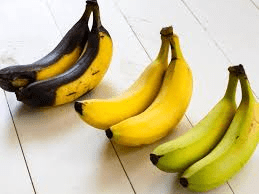
Water: After harvest, during storage and ripening, fruit and vegetable lose water as a result of respiration transpiration and exchange of gas, resulting in water loss.
Loss of H2O depends upon the RH, temperature, anatomical structure and the rate of transpiration and respiration. When the loss is more than 5-10% fruit and vegetable start shrivel and become unusable.
Colour: The most common change is the loss of green colour. This change in colour is due to degradation of chlorophyll structure. The degradation however, is due to pH and oxidative systems. The disappearance of chlorophyll is associated with the synthesis of pigments ranges from yellow to red.
Carbohydrates(CHO):CHO are important in attaining pleasing fruit flavours through sugar to acid balance, attractive colour and good texture.
Organic acids: the nonvolatile organic acids are among the major cellular constituents undergoing changes during the ripening of fruits. As the fruit ripens the acid content is minimize and converted to sugar.
Proteins: Proteins are free amino acids, minor constituents of fruit and do not have much role in determining eating quality of the fruit.
Flavoring compounds: Aroma plays an important part in the development of optimal eating quality of fruits and vegetables. This is due to the synthesis of many volatile organic compounds during the ripening phase.
Enzymes: Many of the chemical and physical processes that occur during ripening of fruits are attributed to enzyme action.
Read Also: Juvenility, Maturity and Senescence of Plants
Chemicals Used for Hastening and Delay of Ripening of Fruit and Vegetables
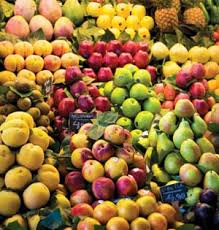
Chemicals that hasten ripening include:
Ethylene: Ethylene related compounds –CEPA-2 chloro ethyl phosphoric acid, CPTA-2,4 chloro phenyl ethyl amine. These compounds are used for pre and postharvest treatments of fruits.
Acetylene and calcium chloride: Calcium carbide treatment is done to generateacetylene to hasten fruit ripening in banana.
Smoketreatment: Burning and releasing smoke from leaves, twigs or straw will also hasten ripening in mango.
2,4-D: 2, 4 dichlorophenoxy acetic acid (2,4-D) is used in ripening of guava while 2,4,5-T (2,4,5-trichlorophenoxy acetic acid) is used in Sapota.
Chemicals Used to Delay Ripening of Fruit and Vegetables
Cytokinins and Kinetins: Delays chlorophyll degradation and senescence of leafy vegetable.
Gibberellins: Post harvest treatments with GA3 retard ripening of tomato and bananas GA3 lowers respiratory rate, retards in climacteric fruits and delays the process of colour changes.
Growth retardants: MH – Prevents sprouting of onion bulbs and potato tubers. Also delays ripening of mango.
Alar: Reduces fruit firmness, fruit colour development and early maturation. It is applied before harvest. In lettuce it reduces senescence.
CCC (Cycocel)-2 chloroethyl – trim ethyl ammonium chloride) is used in delaying senescence of vegetables.
Delaying ripening process by skin coating (waxing):
Edible waxes are coated on fruits which prevent transpiration losses and minimize respiration rate.
Sugar wax along with emulsifier is melted and then boiling water is poured slowly to melted ingredients and an emulsion is prepared.
Factors Affecting Ripening of Fruits and Vegetables
- Respiration
- Transpiration/water loss
- Ripening Ethylene production
- Pathological stresses
- Mechanical stress
- Temperature stresses.
Factors Affecting Ripening of Fruits and Vegetables
Water stress caused by a deficiency of water manifests its damage as reductions in photosynthetic activity and increases in leaf senescence.
Senescence is important at the organ level with respect to decreases in available photosynthetic area, flowering, and fruiting.
Determination of Maturity
If the stage of maturity at which a fruit or vegetable should be harvested is important for its subsequent quality, storage and marketable life.
Determination of maturity can be grouped into physical, chemical, physiological, computation, electronic etc. based on the principles used for measuring the various parameters.
1. Physical Method
Skin colour: change of skin colour of many fruits at maturity (Tomato, Papaya, litchi,mango) colour charts are used for apple, tomato, peach etc. Instruments are also available for measuring colour of fruits and this is mostly used in harvested fruits.
Shape: the shape of fruit and vegetable can change during maturation. E.g. Banana becomes less angular.
Size: Size is frequently used to determine at harvest. It is related to market requirement. Firmness: As fruits mature and ripen the tissues become soften. The softening can be estimated by the finger feel of commodity (Firmness can be measured by penetrometer).
Specificgravity: It is measured through weight of solids or liquids. As fruits mature their specific gravity increases. This method is rarely practiced.
Aroma: Most fruits synthesis volatile chemicals as they ripen. Based on this we can determine whether fruit is ripe.
2. Chemical Method:
a) Sugars, b) starch, c) acidity
Sugar: As the fruit ripens starch is broken down to sugars. Measurement of sugars indicate the stage of maturity or ripeness, sugar constitute the major portion of soluble solid of the fruit juice. Measurement of TSS is done on refractometer.
Starch: Starch content in developing fruit of pear and apple provides harvest maturity.
Acidity: The acidity of many types of fruits change during maturing and ripening.
In citrus, mango, pineapple and many stage other fruits acidity progressively decrease as the fruit matures on the tree.
3. Physiological Methods
Climacteric fruits, in which there is a distinct rise in respiration during ripening, can be sampled and kept at high temperature and respiration rate is measured. By this way we can predict the number of days will take for ripening stage if left on the tree.
Climacteric fruit: harvested at full maturity stage and ripen after harvest. Maximum respiration starts immediately after harvest.
Climacteric fruits have long shelf life of 6-8 days and have no need of sophisticated packing material as fruits are hard, e.g., apple, apricot, avocado, banana, blue berry, kiwi fruit, mango, papaya, passion fruit, peach, peas, muskmelon, watermelon and tomato.
Non-climacteric fruits: Harvested at full ripening (90-95%) complete colour development. Rate of respiration is less than climacteric fruit.
Difficult to transport needs ophisticated packing material because the fruits are soft and ripened. E.g. cherry, cucumber, grapes, lemon, pineapple, mandarins etc.
Other methods of determining maturity;
4. Computation Method
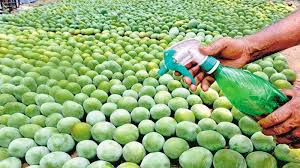
The time required between flowering and fruit being ready for harvesting may be measured by heat units or degree days in a particular environment.
5. Electronic and Other Methods
Electronic colour sorter: used in packing houses to sort-out fruits on the basis of colour, e.g Apple, orange, etc.
Acostingandvibrationtest: The sound of fruit when tapped with the knuckle of the finger, changes during maturation and ripening- e.g. watermelon and jack fruit.
In summary, three stages in the life span of fruits and vegetable could be distinguished as maturation, repining and senescence. Phytohormones play a vital role in plant maturation, beginning with germination and in some cases ending with product consumption.
Maturation is closely associated with senescence. With respect to maturation, ethylene is known to stimulate flower opening, ripening, and abscission of leaves and fruit. Vegetables are harvested over a wide range of maturities, depending upon the part of the plant used as food.
Produce harvested too early may lack flavor and may not ripen properly, while produce harvested too late may be fibrous or overripe.
The principle indicating which stage of maturity a fruit or vegetable should be harvested are crucial to its subsequent storage and marketable life and quality. Three stages in the life-span of fruits and vegetables are therefore, referred to as maturation, ripening and senescence. Maturity could be physiological or commercial.
A fruit is physiologically mature when its development is over, while commercial maturity refers to the timing of harvest to meet specific market and consumer requirements. Ripening overlaps maturation, rendering the produce edible.
Senescence is the last stage of the life span of a crop which is characterized by the natural degradation of the crop as in loss of texture, flavor, etc.
Read Also: What is a Solid Waste and Hazardous Waste
Frequently Asked Questions
We will update this section soon.

